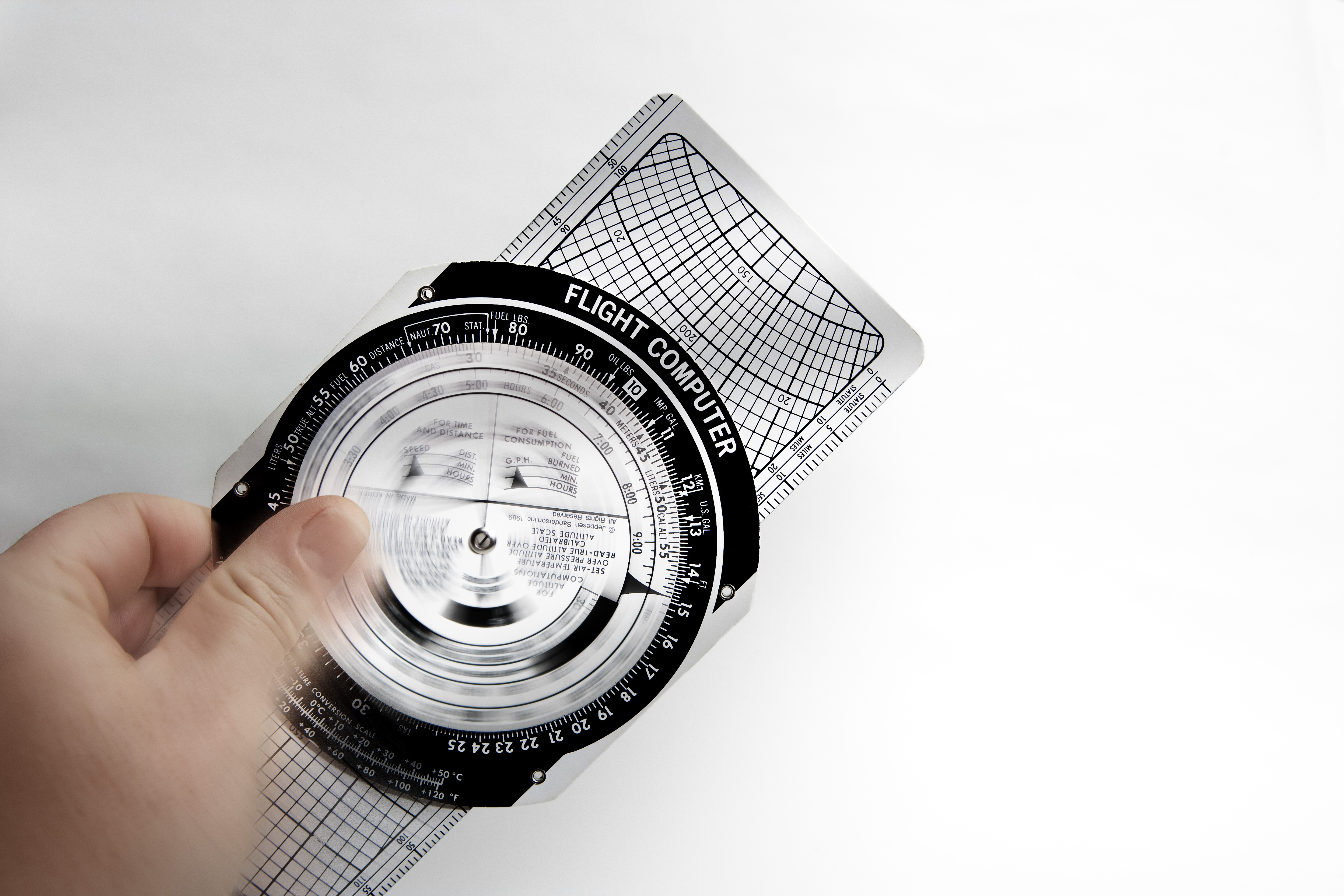In Flight Fuel Management
SAFETY SPOTLIGHT: Fuel Management

To maintain lateral balance in airplanes that cannot simultaneously feed fuel from both wings, try to keep the tanks as equal as possible (within reason). For example: After takeoff, you might fly for half an hour on the left tank, and then an hour on the right tank, switching hourly thereafter. This should keep you from having more than a half-hour’s fuel imbalance at any given time. Many pilots mount a timer in plain view to remind them to switch tanks.
Leaning the Mixture
The performance, range, and endurance figures listed in the POH are based on a properly leaned engine. Most engines can be safely leaned at any altitude so long as they are operating at less than 75 percent power. (Consult your POH for information on calculating percentage of power.)

- Leaning with EGT—Many airplanes are equipped with exhaust gas temperature gauges, or EGTs. As the mixture is leaned, the combustion temperature increases until it peaks. If the mixture is leaned beyond that peak, combustion temperature decreases because there isn’t enough fuel to maintain the high temperature.
- Mixture settings
There are typically two mixture settings at cruise: best power and best economy. Whichever method you choose, always refer to your aircraft’s POH for proper leaning procedures and the engine manufacturer’s operating instructions. - Best power—provides the highest speed for a specific power setting. To achieve best power, lean the mixture for the highest rpm. In EGT-equipped airplanes, lean to peak and then enrich by 75 to 125 degrees Fahrenheit.
- Best economy—helps reduce fuel consumption. To achieve best economy, lean the mixture until the engine runs rough, and then slowly enrich the mixture until the engine runs smoothly. In EGT-equipped airplanes, the most economical mixture setting is usually obtained near peak EGT.
- Cruise climb—If you need to climb to a higher cruising altitude, enrich the mixture before adding power (if you’re at or above 75 percent power) and then lean again when level at your new altitude.
- Leaning for takeoff—At high-density-altitude airports, you’ll have to lean before takeoff to maximize engine power. Consult your POH for details.
Leaning Basics: Leaning without fear
Mike Busch discusses leaning techniques in this webinar.
Estimating Fuel Consumption
Using tabular data, charts, or graphs, the POH shows fuel consumption for various power settings. This will give you some idea of what the fuel consumption will be, but remember: Fuel consumption figures are based on a properly leaned engine operating at a specific power setting.
In flight, recalculate range and endurance hourly. Compare your range calculation with the distance to your destination to make sure you maintain an adequate fuel reserve. By doing this, you can make timely adjustments to your flight plan for unforecast winds, or weather deviations.

A GPS can be a valuable aid in managing fuel consumption as it provides ground speed and time en route, which are essential parameters for determining adequate fuel reserves. In addition, fuel range rings in glass panel cockpits can provide a clear graphic depiction of time and distance to reserve fuel and distance to fuel exhaustion.
Extending Range
Long deviations around weather, stronger than forecast headwinds, or discovery of a low fuel condition may require you to maximize fuel economy. Here are some ways to conserve fuel.
- Slow down—You’ll burn less fuel if you cruise at a lower power setting.
- Fly with the wind—If you have a choice of equidistant fuel stops, pick the one that’s downwind. You may have to backtrack but you’ll burn less fuel and get there faster.
- Lean for best economy—Consult the POH for best economy/long endurance power settings and leaning procedures.
If you’re low on fuel—or worse, dipping into the reserve—land as soon as possible. Don’t wait for the FBO with the best price or the preferred credit card.
Ask ATC: Minimum Fuel vs. Fuel Emergency
Words matter when the fuel gauge points to empty. In this video clip, air traffic controllers explain that when you’re running on empty, what you say is as important as when you say it.
Accident Case Study: Final Approach
The airplane collided with trees during an emergency approach due to fuel exhaustion. But that was only the final link in a long chain of mistakes and missed opportunities. This video reminds us to recognize and convey an emergency—not wait until it’s too late.